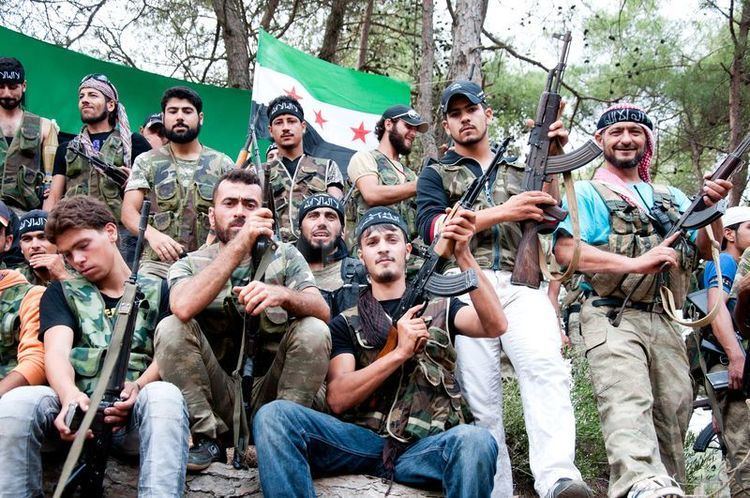 | ||
Syrian turkmen s vs assad putin regime 22 11 15
Syrian Turkmens (also referred to as Syrian Turkomans or Syrian Turks) (Arabic: تركمان سوريا, Turkish: Suriye Türkleri or Suriye Türkmenleri) are Syrian citizens of Turkic origin who mostly adhere to a Turkish heritage and identity.
Contents
- Syrian turkmen s vs assad putin regime 22 11 15
- Seljuk era
- Mamluk era
- Ottoman era
- The AlexandrettaHatay Question
- Population
- Estimates
- Geographic distribution
- Diaspora
- Language
- Religion
- Discrimination
- Syrian civil war
- Displacement
- By the Syrian Government
- By the YPG
- Notable people
- References
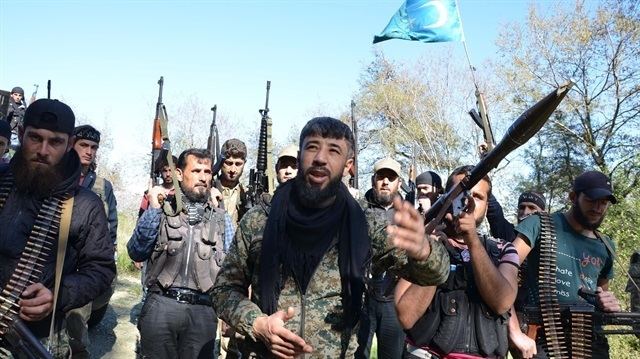
Turkic migration to Syria began in the 11th century during the rule of the Seljuk Empire. However, most Turkmen settled in the region after the Ottoman sultan Selim I conquered Syria in 1516. The Ottoman administration encouraged Turcoman families from Anatolia to establish villages throughout the rural hinterlands of several cities in Ottoman Syria (and later the Syria Vilayet). Migration from Anatolia to Syria was continuous for over 400 years of Ottoman rule, until the dissolution of the Ottoman Empire in 1918; nonetheless, the Syrian Turkmen community continued to reside in the region during the French Mandate and the formation of various Syrian Republics.
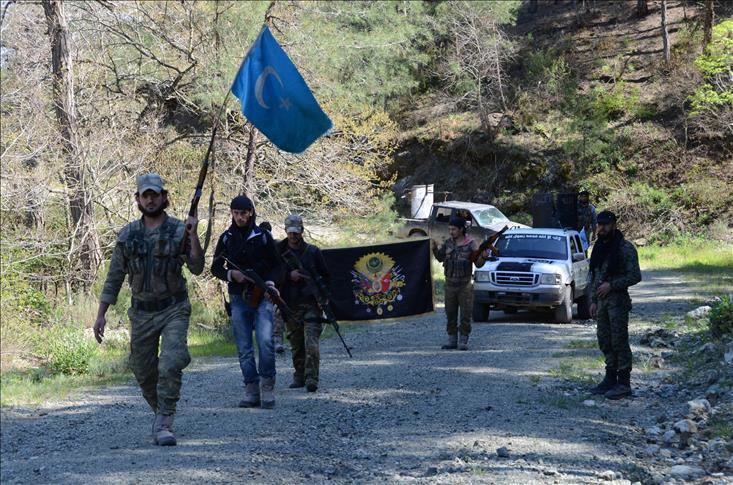
Today the Syrian Turkmen community share common genealogical and linguistic ties with the "Turkmen" of Iraq (see Iraqi Turkmen) and Turkey and do not identifity themselves with the Turkmen of Turkmenistan. Thus, Syrian Turkmen share a closer kinship to the Turks of Turkey rather than to the Turkmens of Central Asia. They reside mostly near the Syrian-Turkish border that runs from the northwestern governorates of Idlib and Aleppo to the northeastern governorate of Raqqa. Moreover, many reside in the Turkmen Mountain, with the area's local name Bayırbucak, region near Latakia, the city of Homs and its vicinity until Hama, Damascus, and the southwestern governorates of Dera’a (bordering Jordan) and Quneitra (bordering Israel).

During the Syrian Civil War (2011–Present), Syrian Turkmen have been involved in military actions against Syrian government forces and have looked to Turkey for support and protection. More recently, they united under one official governing body, the Syrian Turkmen Assembly and created the military wing of the assembly, the Syrian Turkmen Brigades, stating to protect Turkmen regions and population and prevent ethnic changes in them. However, not all Turkmens support Turkey's offensive in Syria, which started in late-August 2016, and some have sided with the Syrian Democratic Forces, forming the Seljuk Brigade.
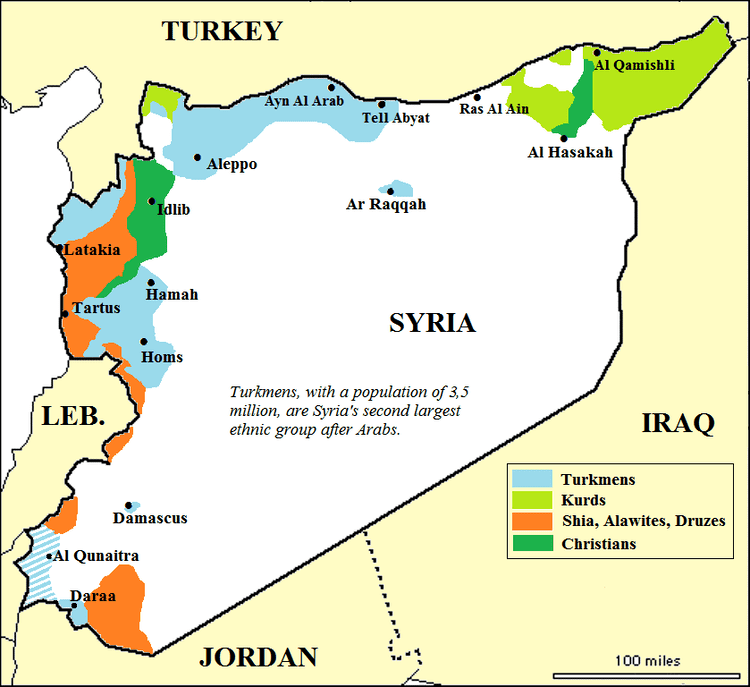
Seljuk era
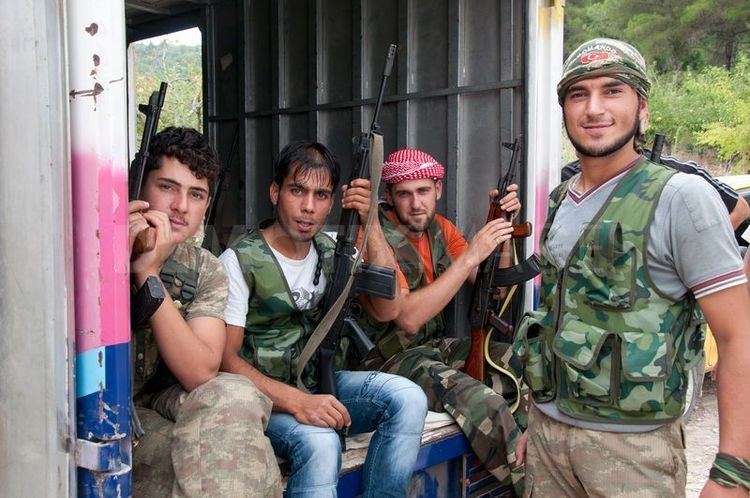
Syrian Turkmen have had a presence in Syria since the 11th century, beginning with the Seljuk conquests in the Middle East. The Seljuk Turks opened the way for mass migration of Turkish nomads once they entered northern Syria in 1071, and took Damascus in 1078 and Aleppo in 1086.
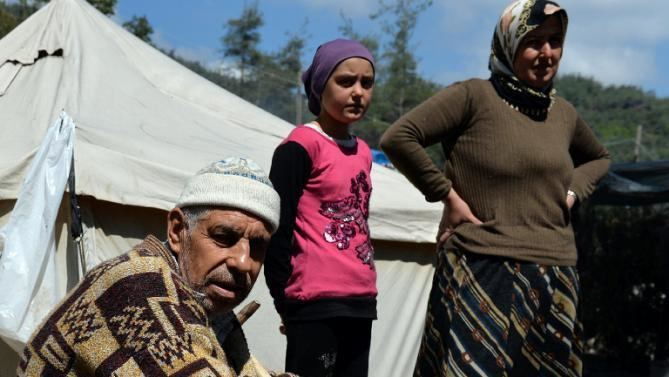
By the twelfth century the Turkic Zengid dynasty (a vassal of the Seljuk Empire) continued to settle Turkmens in the wilayah of Aleppo to confront attacks from the Crusaders. In return for their military service, the Turkic rulers distributed fiefs in the area to the Turkmens.
Mamluk era
In 1260 the Mamluk Sultante – ruled by a line of Turkish and Circassian sultans – entered Syria in response to the Mongol invasions. Whilst Cairo remained the seat of the Mamluk Sultanate, Damascus became their second capital. Hence, by the thirteenth century the Turkmens formed a part of the armies of Damascus and Aleppo, and permanently settled in these regions. In addition, the Turkmen had a presence on the Syrian coast and in the Golan Heights.
After the Bahri sultan of the Mamluks, Baibars, destroyed Qara he settled Turkmens in the town in 1265. Two years later he settled more Turkmens in the Syrian coast to protect the region. The Turkmen were called on to assist in the capture of Margat by the Muslim commander of the Krak des Chevaliers in 1280. The late Mamluk-era writer Ahmad al-Qalqashandi noted that Turkmens formed contingents in the regular armies of greater Syria. The 15th-century Muslim writer Khalil az-Zahiri recorded 180,000 Turkmen soldiers in these armies. The Turkmens mainly inhabited northern Syria where they transitioned into a sedentary way of life, forming settlements.
Ottoman era
Mamluk rule of Syria ended once the Ottoman Sultan Selim I conquered the region in 1516. Thereafter, the Ottoman administration encouraged Turkish nomads from Anatolia to settle in strategic areas of the region. According to the population records of Ottoman Empire in 1518, the total population of Aleppo Eyalet was 54,276, of whom 36,217 belonged to the Turkmen population. By the sixteenth century the Ottomans continued to settle Turkmens in the rural areas around Homs and Hama to keep the bedouin in check and serve as mütesellim.
Turkish migration from Anatolia to Ottoman Syria was continuous for almost 400 years, until Ottoman rule ended in 1918. The Turkish settlement throughout the rural hinterlands of several Syrian cities was a state-organized population transfer which was used to counter the demographic weight and influence of other ethnic groups in the region. Furthermore, the Turkmen served as the local gendarmes to help assert Ottoman authority.
The Alexandretta/Hatay Question
In 1921 the Treaty of Ankara established Alexandretta (present-day Hatay) - which had a Turkish majority population - under an autonomous regime under French Mandate of Syria. The Turks were initially satisfied with this agreement because Article 7 declared that "The Turkish inhabitants of this district shall enjoy every facility for their cultural development. The Turkish language shall have official recognition." Moreover, Article 9 stated that the tomb of Suleyman Shah, grandfather of the first Ottoman ruler Osman I, "shall remain, with its appurtenances, the property of Turkey."
In September 1936 France announced that it would grant full independence to Syria, which would also include Alexandretta. The President of the Republic of Turkey, Mustafa Kemal Atatürk, responded with a demand that Alexandretta be given its own independence. The issue was brought before the League of Nations, which sent a mission to the district in January 1937. The mission concluded that the Turks constituted a majority and by July 1938 elections were held in the province; the Turks formed a majority of 22 seats in a 40-seat parliament of the newly established Hatay State, which remained a joint Franco-Turkish protectorate. The Hatay State began using Turkish flags, and petitioned Ankara to unify Hatay to the Republic of Turkey. France finally agreed to the Turkish annexation on July 23, 1939.
Today, Bayırbucak region, the coastal and rural section covering the northern Latakia area, has a dominant Turkmen majority and is considered by Turks a "stretch of the modern Turkish Hatay Province".
Population
There are no reliable estimates on the total number of Syrian Turkmen residing in the country because official censuses have only asked citizens about their religion. Hence, the Syrian State has not allowed its citizens to declare their ethnic origin or language. This has caused great uncertainty in placing estimates on the total Syrian Turkmen population, with some sources suggesting that they form "one of the smallest groups in the country" and others claiming that the Syrian Turkmen "form the third largest ethnic group in Syria" or possibly the "second largest ethnic group, outnumbering Kurds," if Arabized Syrian Turkmen were also taken into account.
Estimates
No reliable figures of the Syrian Turkmen population exist, estimates vary considerably from several hundred thousand, with more recent ones suggesting numbers starting around 800,000, to over 3.5 million.
In 1996 the Deutsches Orient–Institut stated that the Syrian Turkmen population was not fully known but unconfirmed estimates ranged between 800,000 and 1 million. Contemporary Arab sources since the Syrian Civil War have suggested similar or higher estimates. For example, the Syrian weekly Enab Baladi has stated that despite the absence of accurate statistics of the number of Turkmen in Syria, that their numbers are estimated at between 750,000 and 1.5 million, whilst BBC Arabic has stated there are no accurate statistics on the number of Syrian Turkmen but the number is estimated at between 1.5 million to 3 million Syrian Turkmen.
According to a demographic study of Syria by the Syrian Arab academic Mustafa Khalifa, which was published by the Arab Reform Initiative in 2013, the Syrian Turkmen formed approximately 4-5% of Syria's total population (est.960,000-1,200,000), however, he points out that the population is significantly higher is Arabized Turkmen were also taken into account. He states the following:
Salman Falah Hamud - Chairman of the Committee on Druze Education and Culture in the Ministry of Education and Culture of Israel - has stated that the Syrian Turkmen form 3%-7% of Syria's total population. Moreover, Amin Mohamed from the pan-Arab media outlet Al-Araby Al-Jadeed has stated that the Syrian Turkmen are one of the largest ethnic groups and that their number perhaps exceeds the Kurdish population.
Turkish analysts Hüseyin Raşit Yılmaz and Selim Koru, from the Fair Observer have argued that the Syrian state has often sought to represent the Syrian Turkmen as a small community, leading some experts to suggest very low estimates of the Syrian Turkmen. Indeed, numerous Western media outlets have suggested that the Syrian Turkmen population is about 100,000 or 200,000. However, BBC English has stated that "there are no reliable population figures but they are estimated to number between about half a million and 3.5 million". Similarly, the New York Times has stated that there no reliable figures and that estimates range widely between hundreds of thousands to perhaps more than 3 million. According to Sebastien Peyrouse, a Senior Research Fellow with the Central Asia-Caucasus Institute, there is nearly one million Turkmen in Syria. Hugh Eakin and Alisa Roth from The New York Review of Books have also stated that there was "as many as a million Turkmen" in Syria.
Some Turkish sources have grouped the Syrian Turkmen into two groups: those who still speak Turkish and those who have been Arabized. Ali Öztürkmen, Bilgay Duman and Oytun Orhan, from the Turkish think-tank ORSAM, claim that there are 1.5 million Turkish-speaking people in Syria, though the total population (including Arabized Syrian Turkmen) is 3.5 million. The President of the Syrian Turkmen Assembly, Abdurrahman Mustafa, has also stated that only "1.5 million people out of 3.5 million Turkmens speak Turkish".
Geographic distribution
Most Turkmens in Syria live in the area around the northern Euphrates basin near Aleppo and in scattered villages in central Syria, particularly around Homs and Hama. Some larger Turkmen communities in the vicinity of Homs and Hama include Houla, Aqrab and Talaf. The Turkish Encyclopedia claims there are 523 Turkmen villages in Syria. The main areas of Turkmen concentration are the regions straddling the Turkish border, particularly in the Aleppo and Latakia Governorates. The cities of Aleppo, Manbij, al-Bab, Jarabulus, Azaz, Qatma all have significant Turkmen populations, largely descendants of the Barak tribes, which also dominate the Turkish areas of Kilis, Gaziantep and Şanlıurfa. In the Latakia Governorate, the border regions of Ras al-Bassit and an area which is considered a stretch of the Hatay Province of Turkey, called Bayırbucak (from two different areas, Bayır and Bucak) is predominantly populated by Turkmens. Furthermore, in Aleppo governorate, the region stretching from Azaz to Jarabulus is also a Turkmen-dominated area and Çobanbey (al-Rai) serves as a cultural capital for Turkmens in the region. The city of Aleppo also has a significant urban Turkmen population; with Bustan al-Basha (Bostanpaşa), Haydariyah (Haydariye), Holluk (Bağrıyanık), Sheikh Hizir (Şeyh Hızır), Sheikh Feriz (Şeyh Firuz), Saladdin (Selattin), Owaijah (Uveyce) being neighborhoods composed mainly of ethnic Turkmens.
Diaspora
Since the Syrian Civil War hundreds of thousands of Syrian Turkmen have been internally displaced and/or have been forced to leave the country, especially to neighbouring states but also to Western Europe. In particular, approximately 300,000 to 500,000 Syrian Turkmen have taken refuge in the Republic of Turkey. Moreover, there is between 125,000 and 150,000 Syrian Turkmen refugees in Lebanon, outnumbering the long-established Turkish minority of Lebanon.
Language
The majority of Syrian Turkmen living in rural regions of the country speak Turkish as their mother tongue, whilst those in urban areas - particularly Arabized Syrian Turkmen - speak Arabic. Various dialects of Turkish are spoken throughout Syria: in Aleppo they speak a Kilis and Antep dialect; in Tell Abyad and Raqqa they speak an Urfa dialect; and in Bayırbucak they speak a Hatay/Yayladağı dialect of the Turkish language. Some Syrian Turkmen living far from the Turkish border, such as in Homs, have managed to preserve their national identity but are more competent in speaking the Arabic language. In Damascus Syrian Turkmen speak the Turkish language with a Yörük dialect.
Religion
The majority of Syrian Turkmen practice the Sunni branch of Islam. Syrian Turkmen Sunnis form approximately 3% of Syria's population, whilst Syrian Turkmen Alevis form about 0.7% of Syria's population.
Discrimination
In Syria, since the rule of Hafez al-Assad, there has been a ban on Syrian Turkmen communities publishing works in Turkish.
Syrian Turkmen occupied a low rung on the societal ladder, as reported by Al Bawaba, it was stated that Assad always sought to benefit his politically dominant Shiite religious minority. The report quoted Bayırbucak Turkmens as highlighting, "They would take Alawites first no matter what, even if they had degrees, Turkmens couldn't find jobs". Since the beginning of the Syrian Civil War, Syrian Turkmen are fighting to turn the tide and gain equal rights and protection of their culture, identity and language in the after-war Syria.
Syrian civil war
Since the beginning of the Syrian civil war in 2011, hundreds of thousands of Syrian Turkmen have been displaced from their homes and thousands have been killed due to President Bashar al-Assad's government, as well as the terrorist attacks carried out by "Islamic State of Iraq and the Levant" (ISIL), and by forced deportations enforced by the YPG fighters. Whilst Turkmen villages in Hama, Homs, and Latakia have been destroyed by the Syrian government, the Turkmen villages in Aleppo have been entirely controlled by ISIL.
Syrian Turkmen, with the support of the Republic of Turkey, have taken up arms against the Syrian government. Several Syrian Turkmen parties united under the Syrian Turkmen Assembly, which is affiliated with the National Coalition opposition group. In 2012 the Syrian Turkmen Brigades was reported to be about 2,000-10,000 strong. A Second Coastal Division was formed in 2015 and along with another extensive Turkmen militia group Sultan Murad Division, the Turkmen brigades are closely affiliated with the Free Syrian Army (FSA). The Syrian Turkmens main opponents are the regular Syrian army and ISIL, with YPG being the regional opponent. Another Syrian Turkmen unit - the Seljuk Brigade and Manbij Turkmen Brigade- has sided with the Kurdish-led People's Protection Units (YPG) and joined the US-backed Kurdish-led opposition coalition called the Syrian Democratic Forces (SDF). Overall, the Turkmen brigades have approximately 14,000 to 25,000 fighters against the Syrian government.
Displacement
Since the beginning of the Syrian civil war many Syrian refugees (including Syrian Turkmen) have sought asylum in Turkey, Jordan, Lebanon and Northern Iraq, as well as several Western European countries. Moreover, many Syrian Turkmen have also been internally displaced from their homes, forcing them to settle in other parts of Syria.
In 2012 the UN Refugee Agency had stated that the Syrian Turkmen formed a significant number of the first wave of refugees who entered Turkey.
In October 2015 the Syrian independent newspaper Zaman Al Wasl reported that 125,000 to 150,000 Syrian Turkmen refugees arrived in Lebanon, and hence they now outnumber the Turkish minority of Lebanon. Moreover, in May 2016, the Russian government-controlled news agency Sputnik claimed that there are 300,000 Syrian Turkmen refugees in Turkey. By December 2016 the Turkish Foreign Ministry Undersecretary Ümit Yalçın stated that Turkey opened its borders to 500,000 Syrian Turkmen.
By the Syrian Government
The Syrian Government of president Bashar al-Assad, backed by Russia since 2015, have targeted several areas populated by the Syrian Turkmen, as they were largely involved in anti-government attacks, constantly targeting the nearby Armenian and Christian neighborhoods. For example, in October 2015 Russian bombings in Aleppo forced 350,000 Syrian refugees to head to Turkey - of which 50,000 were Syrian Turkmen. By November 2015 Russian raids on Syrian Turkmen areas displaced 300,000 Turkmen living in northern Latakia alone.
On February 2, 2016, at least seven women and children were killed by Russian air strikes in a Syrian Turkmen village in the northern countryside of Homs. In the same month Russian warplanes had staged 600 strikes on Syrian Turkmen villages, displacing approximately 10,000 people.
By the YPG
There have also been reports that Kurdish YPG fighters had forced thousands of Arabs and Syrian Turkmen, as well as Kurdish, civilians from their homes in areas in the Autonomous Administration of Rojava. In June 2015 the Syrian Turkmen were forcefully displaced from their homes in villages south of Hasakah and Tal Abyad. According to a 2015 report published by Amnesty International witnesses saw YPG fighters gather residents from Hammam al-Turkman into the local school and instructed 1,400 Turkmen families to leave the area. The head of the local civilian council in Tel Abyad, Akram Dada, told Amnesty International that YPG fighters also forced 800 Syrian Turkmen to leave Mela Berho in July 2015. Approximately 200 Syrian Turkmen refugees fled to Urfa, in southern Turkey, while 700 more fled to the eastern areas of Tal Abyad, once the Kurds seized the town of Tell Hammam al-Turkman from ISIL - which the YPG accused the locals of collaborating with.
